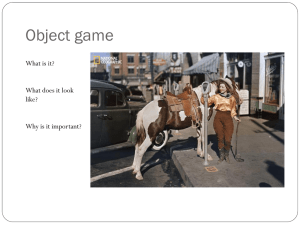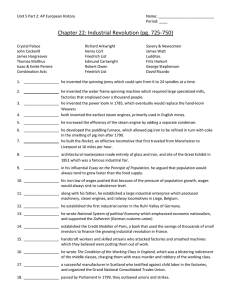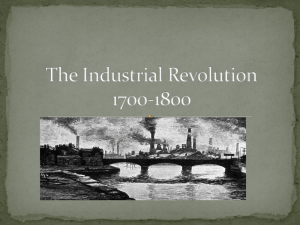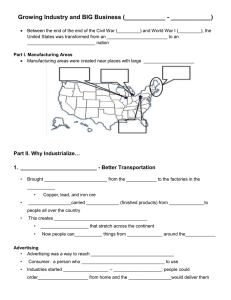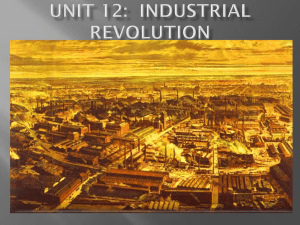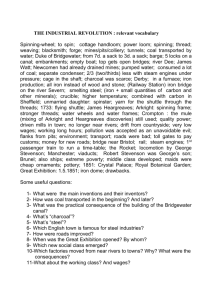12.1 RE & SG answers & notes - wswildcats
advertisement
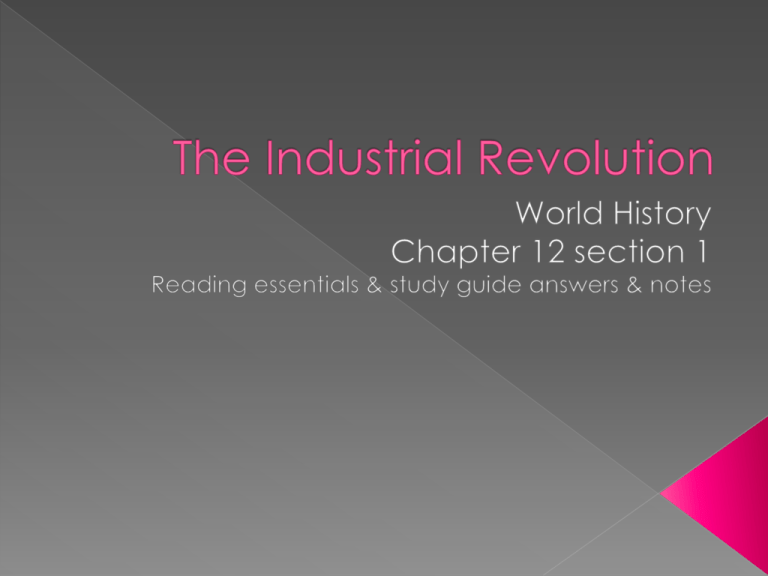
Changing agricultural practices Growing population Capital to invest Plentiful natural resources (coal, iron ore) Huge empire provided markets for goods Factory owners wanted machines running all day & all night This led to the development of shifts Employees came to work for set hours Employees did the same work over and over Belgium, France, German States Because their governments took an active role in supporting the development of industry Larger population Urbanization (the growth of cities) Creation of a new middle class Creation of a new working class Changes in family roles & structure Birth of socialism All of the steps in the production process were done by individuals in their homes Near water Early machines relied on water power James Watt improved the steam engine so it was able to power machinery - 1782 Railroads Women Railroads Steamboats A decline in death rates (less war & famine) Abundant food supply › More healthy people › More resistant to disease The growth and development of cities Less labor was required in the rural areas b/c farming had become more mechanized People flocked to growing cities to find jobs in the new factories Miserable! › Long hours › Repetitive work › Low wages › Dangerous › Strict discipline › Use of child labor › Excessive hours for women › Lower wages for children & women Often the entire family had to work in some capacity b/c they needed the money to afford living in the city Men became the “breadwinner” Women became the caregiver to the kids Before everyone in the family helped with all tasks A system where society (really, the government) owns and controls all of the means of production › Natural resources (mines) › Transportation industries › Factories Competition Cooperation Enclosure Movement: › Laws allowing large landowners to fence in common lands, which forced peasants to urban areas in search of work in the new factories Capital: › Money to invest in machinery and buildings Entrepreneurs: › Businessmen who look for new ways to make a profit and are willing to take risks with their investments Coal was CRUCIAL to industrialization! › It was burnt to power steam engines › It was an ingredient in the iron making process Puddling: › New iron making process developed by Henry Cort that resulted in a higher quality, stronger product › Iron was used to construct taller buildings, machines, and new modes of transportation Construction of new lines created jobs Less expensive transportation costs led to lower prices for consumers & larger markets Larger markets & lower prices = more sales More profits allowed owners to reinvest in new/more machinery

